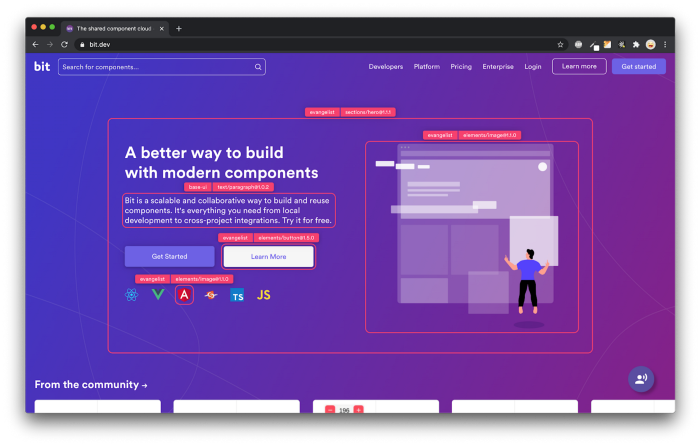This content originally appeared on Bits and Pieces - Medium and was authored by Brian Ridolce
How to Set Up a Next.js App with TypeScript and Zod
Learn how to set up a Next.js app with TypeScript and Zod library in no time and start building production-ready web applications with ease.

As a web developer, working on complex projects can be a daunting task. Especially, when it comes to setting up a new project, choosing the right tools, and configuring them can take up a lot of time and effort. One of the most important aspects of any modern web application is its data validation. And, that’s where TypeScript and Zod library comes into the picture. In this article, we will discuss how to set up a Next.js app with TypeScript and Zod library.
What is Next.js?
Next.js is a React-based server-side rendering (SSR) framework that provides a complete solution for building production-ready web applications. It comes with built-in support for server-side rendering, static site generation, dynamic imports, and other modern web development features.
Why use TypeScript with Next.js?
TypeScript is a typed superset of JavaScript that provides compile-time type checking, better IDE support, and improved code quality. Next.js supports TypeScript out of the box and makes it easy to build scalable and maintainable applications.
What is Zod Library?
Zod is a TypeScript-first schema validation library that provides a simple and intuitive API for defining and validating data schemas. It supports runtime validation, type inference, and error reporting, making it easy to handle complex data structures.
Setting up a Next.js app with TypeScript and Zod:
To set up a Next.js app with TypeScript and Zod, we need to follow these steps:
- Create a new Next.js app with TypeScript:
To create a new Next.js app with TypeScript, we can use the following command:
npx create-next-app --typescript my-app
This will create a new Next.js app with TypeScript support.
2. Install Zod library:
To install the Zod library, we can use the following command:
npm install zod
This will install the Zod library as a dependency in our project.
3. Define a data schema using Zod:
To define a data schema using Zod, we can create a new file named schema.ts in our project root and define our schema using the following code:
import * as z from "zod";
export const UserSchema = z.object({
name: z.string().min(3),
email: z.string().email(),
age: z.number().int().positive(),
});
In this example, we have defined a simple user schema with name, email, and age fields.
💡 Note: You can now share this Zod validation function to an open-source platform like Bit if you want to reuse it across projects with a simple npm install.
Learn more about this here:
Extracting and Reusing Pre-existing Components using bit add
4. Create a new API route:
To create a new API route, we can create a new file named users.ts in the pages/api directory and define our API route using the following code:
import { NextApiRequest, NextApiResponse } from "next";
import { UserSchema } from "../../schema";
export default async function handler(
req: NextApiRequest,
res: NextApiResponse
) {
try {
const user = UserSchema.parse(req.body);
res.status(200).json({ message: "User created successfully", user });
} catch (error) {
res.status(400).json({ message: "Validation error", error });
}
}In this example, we have defined an API route that accepts a POST request with a user object in the request body. We validate the user object using our UserSchema and return a success message with the validated user object if the validation is successful. Otherwise, we return a validation error message with the error details.
5. Test the API route:
To test the API route, we can use any REST client like Postman or Insomnia. We can send a POST request to the users API route with a user object in the request body. If the validation is successful, we will get a success message with the validated user object. Otherwise, we will get a validation error message with the error details.
Conclusion:
In this article, we have discussed how to set up a Next.js app with TypeScript and Zod library. We have seen how easy it is to define a data schema using Zod and use it to validate API requests. This makes our code more maintainable, scalable, and less prone to errors. By using TypeScript with Next.js, we can leverage its type-checking capabilities to catch errors early in the development cycle and improve the overall code quality.
Zod library provides a simple and intuitive API for defining and validating data schemas, making it easy to handle complex data structures. By following the steps outlined in this article, we can set up a Next.js app with TypeScript and Zod library in no time and start building production-ready web applications with ease.
View all my productivity prompts over here:
briandolcevida PromptBase Profile | PromptBase
Build Apps with reusable components, just like Lego

Bit’s open-source tool help 250,000+ devs to build apps with components.
Turn any UI, feature, or page into a reusable component — and share it across your applications. It’s easier to collaborate and build faster.
Split apps into components to make app development easier, and enjoy the best experience for the workflows you want:
→ Micro-Frontends
→ Design System
→ Code-Sharing and reuse
→ Monorepo
Learn more:
- Creating a Developer Website with Bit components
- How We Build Micro Frontends
- How we Build a Component Design System
- How to reuse React components across your projects
- 5 Ways to Build a React Monorepo
- How to Create a Composable React App with Bit
- How to Reuse and Share React Components in 2023: A Step-by-Step Guide
Zod and NextJS — a comprehensive guide was originally published in Bits and Pieces on Medium, where people are continuing the conversation by highlighting and responding to this story.
This content originally appeared on Bits and Pieces - Medium and was authored by Brian Ridolce
Brian Ridolce | Sciencx (2023-05-08T01:51:07+00:00) Zod and NextJS — a comprehensive guide. Retrieved from https://www.scien.cx/2023/05/08/zod-and-nextjs-a-comprehensive-guide/
Please log in to upload a file.
There are no updates yet.
Click the Upload button above to add an update.
